#roles of biotechnology
Explore tagged Tumblr posts
Text
Biotechnology's Role in Shaping a Healthier, Greener, and More Abundant Future
What is biotechnology and its significance in various industries? How does biotechnology contribute to advancements in healthcare, agriculture, and environmental sustainability? Biotechnology is a broad field that involves the use of living organisms, or their systems and processes, to develop and create products, technologies, or solutions that address various challenges and needs in different…

View On WordPress
#agriculture#and environmental sustainability?#biotechnology trending#business#How does biotechnology contribute to advancements in healthcare#latest biotechnology#roles of biotechnology#What is biotechnology and its significance in various industries?
0 notes
Text
The Transformative Role of AI in BiotechnologyWritten by: S.M. Tejashree KashyapChrist (Deemed to be) University, KengeriBiotechnology Department
IntroductionArtificial Intelligence (AI) is transforming multiple sectors, but its influence on biotechnology is particularly groundbreaking. The fusion of AI with biotech has expedited research, increased efficiency, and opened new frontiers in healthcare, agriculture, and various life sciences fields. This article delves into the key areas where AI is revolutionizing biotechnology and the…
#Kengeri
Biotechnology Department#The Transformative Role of AI in Biotechnology
Written by: S.M. Tejashree Kashyap
Christ (Deemed to be) University
0 notes
Text
"Once thought to be extinct, black-footed ferrets are the only ferret native to North America, and are making a comeback, thanks to the tireless efforts of conservationists.
Captive breeding, habitat restoration, and wildlife reintegration have all played a major role in bringing populations into the hundreds after near total extinction.
But one other key development has been genetic cloning.
In April [2024], the United States Fish and Wildlife Service announced the cloning of two black-footed ferrets from preserved tissue samples, the second and third ferret clones in history, following the birth of the first clone in December 2020.
Cloning is a tactic to preserve the health of species, as all living black-footed ferrets come from just seven wild-caught descendants. This means their genetic diversity is extremely limited and opens them up to greater risks of disease and genetic abnormalities.

Now, a new breakthrough has been made.
Antonia, a black-footed ferret cloned from the DNA of a ferret that lived in the 1980s has successfully birthed two healthy kits of her own: Sibert and Red Cloud.
These babies mark the first successful live births from a cloned endangered species — and is a milestone for the country’s ferret recovery program.
The kits are now three months old, and mother Antonia is helping to raise them — and expand their gene pool.
In fact, Antonia’s offspring have three times the genetic diversity of any other living ferrets that have come from the original seven ancestors.
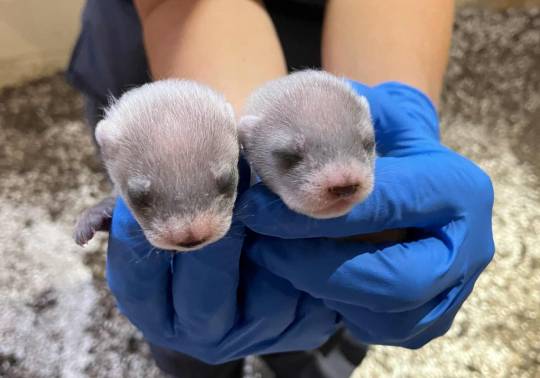
Researchers believe that expanded genetic diversity could help grow the ferrets’ population and help prime them to recover from ongoing diseases that have been massively detrimental to the species, including sylvatic plague and canine distemper.
“The successful breeding and subsequent birth of Antonia's kits marks a major milestone in endangered species conservation,” said Paul Marinari, senior curator at the Smithsonian’s National Zoo and Conservation Biology Institute.
“The many partners in the Black-footed Ferret Recovery Program continue their innovative and inspirational efforts to save this species and be a model for other conservation programs across the globe.”
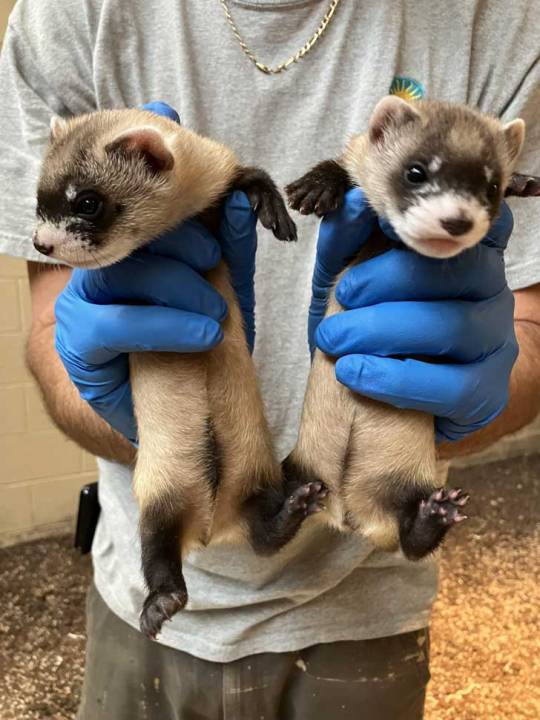
Antonia actually gave birth to three kits, after mating with Urchin, a 3-year-old male ferret. One of the three kits passed away shortly after birth, but one male and one female are in good health and meeting developmental milestones, according to the Smithsonian.
Mom and babies will remain at the facility for further research, with no plans to release them into the wild.
According to the Colorado Sun, another cloned ferret, Noreen, is also a potential mom in the cloning-breeding program. The original cloned ferret, Elizabeth Ann, is doing well at the recovery program in Colorado, but does not have the capabilities to breed.
Antonia, who was cloned using the DNA of a black-footed ferret named Willa, has now solidified Willa’s place as the eighth founding ancestor of all current living ferrets.
“By doing this, we’ve actually added an eighth founder,” said Tina Jackson, black-footed ferret recovery coordinator for the U.S. Fish and Wildlife Service, in an interview with the Colorado Sun.
“And in some ways that may not sound like a lot, but in this genetic world, that is huge.”
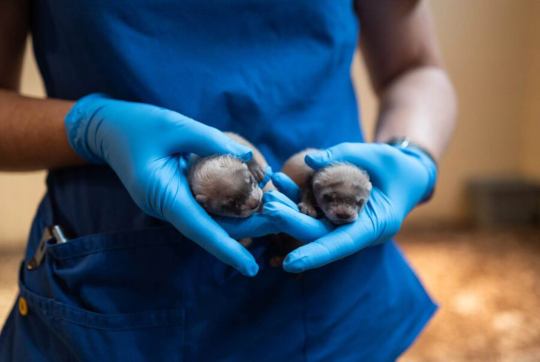
Along with the USFWS and Smithsonian, conservation organization Revive & Restore has also enabled the use of biotechnologies in conservation practice. Co-founder and executive director Ryan Phelan is thrilled to welcome these two new kits to the black-footed ferret family.
“For the first time, we can definitively say that cloning contributed meaningful genetic variation back into a breeding population,” he said in a statement.
“As these kits move forward in the breeding program, the impact of this work will multiply, building a more robust and resilient population over time.”"
-via GoodGoodGood, November 4, 2024
#ferret#ferrets#mustelid#black footed ferret#conservation#endangered species#conservation biology#biodiversity crisis#dna#genetics#cloning#good news#hope#hope posting#hopecore#hopepunk
7K notes
·
View notes
Text
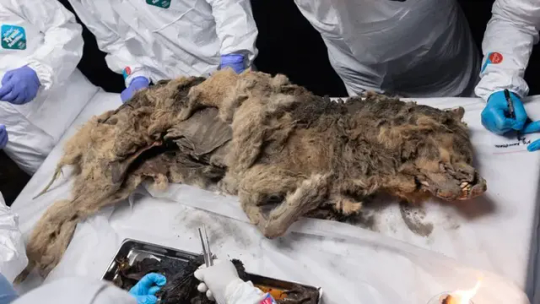
A Mummified 44,000-Year-Old Wolf Found in Siberian Permafrost
Scientists perform necropsy on an ancient wolf pulled from Russian permafrost that may still have prey in its stomach.
In a first-of-its-kind discovery, a complete mummified wolf was pulled from the permafrost in Siberia, after being locked away for more than 44,000 years. Scientists have now completed a necropsy (an animal autopsy) on the ancient predator, which was discovered by a river in the Republic of Sakha — also known as Yakutia — in 2021.
This is the first complete adult wolf dating to the late Pleistocene (2.6 million to 11,700 years ago) ever discovered, according to a translated statement from the North-Eastern Federal University in Yakutsk, where the necropsy was performed. The discovery, scientists say, will help us better understand life in the region during the last ice age.
Photos from the necropsy show the wolf's mummified body in exquisite detail. Animals are preserved in permafrost through a type of mummification involving cold and dry conditions. Soft tissues are dehydrated, allowing the body to be preserved in a frozen time capsule.
Researchers took samples of the wolf's internal organs and gastrointestinal tract to detect ancient viruses and microbiota, and to understand its diet when it died.
"His stomach has been preserved in an isolated form, there are no contaminants, so the task is not trivial," Albert Protopopov, head of the department for the study of mammoth fauna of the Academy of Sciences of Yakutia, said in the statement. "We hope to obtain a snapshot of the biota of the ancient Pleistocene."


He added the wolf, which tooth analysis revealed was male, would've been an "active and large predator," so they will be able to find out what it was eating, along with the diet of its victims, which "also ended up in his stomach."
Another key aspect of the necropsy is looking at the ancient viruses the wolf may have harbored. "We see that in the finds of fossil animals, living bacteria can survive for thousands of years, which are a kind of witnesses of those ancient times," Artemy Goncharov, who studies ancient viruses at the North-Western State Medical University in Russia, and is part of the team analyzing the wolf, said in the statement.
He said the research project will aid their understanding of ancient microbial communities and the role of harmful bacteria during this period. "It is possible that microorganisms will be discovered that can be used in medicine and biotechnology as promising producers of biologically active substances," he added.
The wolf necropsy is part of an ongoing project to study the wildlife that lived in the region during the Pleistocene. Other species examined include ancient hares, horses and a bear from the Holocene. The team plans to study the wolf's genome to understand how it relates to other ancient wolves from the region, and how it compares to its living relatives. The team now plans to start studying another ancient wolf discovered in the Nizhnekolymsk region of northeast Siberia in 2023.
By Hannah Osborne.





#A Mummified 44000-Year-Old Wolf Found in Siberian Permafrost#mummified wolf#Republic of Sakha#Yakutia#late pleistocene#ancient animals#ancient artifacts#archeology#archeolgst#history#history news#ancient history#ancient culture#ancient civilizations
321 notes
·
View notes
Note
How do you think the 07 boys would react if the reader died? Like in an accident or killed by shredder or sm? just food for thoughts
They say there are five stages of grief...

Leonardo will blame himself for it no matter how you die. Did you get sick? He's a ninja. He should have noticed the symptoms as soon as they appeared! Did the Shredder kill you? God, that's his worst nightmare. Because it not only means he failed as a partner, but he also failed as the leader of the team you belonged to. He couldn't protect you, and he can never forgive himself for that.
Denial
There must be some way to rebound it. His mind flashes from here to there, and Leo considers possibilities that in a normal situation would seem delusional. Could Donatello build a time machine? There must be some way to reverse it. There must be. It can't be that you're just... gone.
2. Anger
It's a sheer tough situation because even though he would want to fight recklessly, with no regard for himself, Leo has to be strong for others and continue playing his role as leader and older brother. So he bottles up his feelings; buries them deep until they slowly rot inside him.
When he faces the Shredder again, he notices that there is something different, and for the first time in decades, Shredder fears he may not win. I think Leo would also become rougher with low-ranked criminals, hitting harder than necessary. The terrifying part? It's always perfectly calculated.
Also, his brothers resent his anger during training because he becomes tougher and more demanding. However, it's only because Leo can't afford to lose anyone else. He wouldn't be able to bear it.
3. Bargaining
He should at least be able to compensate your family. Friends. Anyone who loved you as much as he did. Thinking about doing things for people who were close to you brings him a kind of comfort that appeases his anger. It's a way of trying to regain a sense of control over the situation and find a way to cope with his pain.
4. Depression
He'll never again feel the tender caress of your fingertips over his shell, the warmth of your lips pressed against his own, or the sweet melody of your laughter echoing through the lair. The realization grips his heart with an ironclad vice, suffusing his spirit. It's a devastating blow that rends his very soul asunder.
5. Acceptance
But you wouldn't want him to be sad forever. No, in fact, Leo is sure you'd be insisting that he needs to move on. It was okay to feel, to be upset and cry along the way, but it was time to get up. Master Splinter plays a very important role in how Leo slowly recovers himself. One step at a time.

Donatello: It depends on how you die, but I believe what could drive him insane is if he loses you slowly due to an illness. That would be his personal hell because no matter how hard he tries to change things, researching new methods, creating medications, even biotechnology... nothing seems to yield results. Isn't he supposed to be a genius? What's the point of intellect if it can't use it to save you?!
Denial
"With this cryogenic capsule, I can keep her body intact a little longer," he tells your loved ones, who stare at him, paralyzed by the desperation in his eyes. "I can fix this. I can- I just need more time." But a person is not a machine, and your loved ones did not allow him to experiment.
A machine! That's it! Donatello made a copy of your memory and some parts of your consciousness before your departure; perhaps he could put that into a robot and somehow... maybe with enough effort and the right wires...
2. Anger
It worked, and yet it failed miserably. This thing in front of him looked like you, sounded like you, shared some memories, and yet, it felt utterly empty. How could he insult your memory out of his own desperation?
Donatello smashed his Bo staff into the control center, piercing it completely. He trembled a little as he continued to hold it, buried in the circuits. That night there was a blackout in the lair, and all that could be heard from the lab was the grinding of teeth.
3. Bargaining
It happened to you, but perhaps with all the research and testing, Donatello could prevent someone else from going through the same thing. So, he decided to sell his investigation, using a pseudonym and a couple of computer skills made it no problem to do it all from the lair. For him, it's like gradually adapting to the reality of his loss through these small actions.
4. Depression
To think that a robot could replace you. What the hell was he thinking? Your scent, the softness of your skin, the beautiful way you looked at him when discussing a new discovery, that could never be replicated. The lab, like his heart, felt terribly empty. It was a feeling as suffocating as it was overwhelming: knowing that you would never be there again, that he couldn't see or hear you anymore. Suddenly, he can't breathe.
Burying himself in his work keeps his mind occupied. He doesn't need sleep; he needs to progress with the research. Donatello escapes from every little space that could allow you to somehow appear in his mind.
5. Acceptance
April helped a lot in this part, as she was the one who started bringing you into the conversation with positive things, and Don has small spaces to feel shared nostalgia. April feels the same loss; she understands, and that is extremely comforting.
Over time, the feeling of emptiness left by your memory transitions to a bittersweet sensation, and gradually he allows himself to move forward, remembering you with a smile, with a fondness that embraces him from the bottom of his heart. Donatello learned that every minute counts, and for that reason, he now makes space to spend more time with the people he loves, and who love him in return.

#this is too long!!#gonna make another post for Mikey and Raph#sorry!!!#tmnt 2007#tmnt leo 2007#tmnt donatello 2007#tmnt 2k7#tmnt leo x reader#tmnt donnie x reader#tmnt donatello#tmnt leonardo#tmnt leonardo x reader#tmnt donatello x reader#tmnt 2007 donnie#tmnt 2007 leo#tmnt#leo tmnt#donnie tmnt#tmnt x reader#tmnt x y/n#tmnt x you
229 notes
·
View notes
Text
glycolysis gluconeogenesis glycogenesis krebs cycle electron transport chain fermentation pentose phosphate pathway fatty acid synthesis fatty acid oxidation molecular cloning native gels sds-page gel electrophoresis tissue specific metabolism cholesterol metabolism ketone bodies recombinant dna and biotechnology zeroth law of thermodynamics hydrostatics fluid dynamics fluids in physiology nuclear binding energy and mass defect nuclear reactions consciousness-altering drugs drug addiction and the reward pathway in the brain the role of emotion in retrieving memories retrieval cues neural plasticity james-lange theory cannon-bard theory schachter-singer theory biological bases of behavior genetically based behavioral variation in natural populations psychoanalytic perspective dissociative disorders trauma and stressor related disorders drive reduction theory incentive theory bystander effect social loafing habituation and dishabituation operant conditioning fixed-ratio reinforcement prejudice and bias individual vs institutional discrimination microsociology vs macrosociology theories of demographic change.......................
135 notes
·
View notes
Text
To Make a Mechanical Heart Beat (Android AU)
In a highly technologically advanced world where human-like androids exist to serve humans, you lived a cushy life as the child of a successful CEO of a large biotechnology company. You grew up in a large manor surrounded by android maids and butlers that served you family’s every need and looked after the estate. Androids were a part of your everyday life, and it was easy to treat them the same as humans. They looked just like ordinary people save for the green power button located under their clavicle. You even made a few friends among the staff and cherished the android nanny you had as a child.
As an only child, your father had high hopes for you to inherit the family business and keep it thriving. Once you became of age, your father purchased you your very own android tutor who would teach you the ways of managing your family’s biotechnology business. The day you received your tutoring android Alhaitham, you were awed by his beauty. Alhaitham was the most handsome person you’ve ever seen—human or android. He had a well-defined muscular build that went surprisingly well with his smooth and youthful face. His pretty facial features were framed by ash-colored hair that looked soft to the touch. He was dressed in a sleeveless black shirt and black pants, complimented by a teal cardigan. His appearance was completed by a pair of what looked like gold and teal headphones to which several cyan wires were connected to, leading down somewhere behind his back.
When you pressed the green diamond-shaped button under his clavicle, Alhaitham powered on. As his systems started up and ran a diagnostic test, the android slowly opened his eyes to reveal the most striking pair of eyes you had ever seen. They were turquoise with orange pupils that seemed to stare right through you. He stared back at you, silent and expressionless to the point that it unnerved you a bit. You were used to the android servants in your manor acting cheerful and friendly as was a part of their programming, but your future tutor seemed to lack such a function. Even so, you were still intrigued by the handsome android, and agreed to have him as your tutor.
Once your tutoring sessions began, you quickly learned that Alhaitham was an excellent tutor. He explained tricky concepts clearly and made sure you understood the material down to the last detail. Even when there were days where you struggled to understand a certain topic, Alhaitham was calm and patient with you, trying out different ways of explaining the material to see what method worked best for you. He carried out his role perfectly, never doing anything more nor less than what was expected of him.
During your time together, you also learned that Alhaitham was a bit different from most androids you had met throughout our life. You were used to the friendly smiles and cheerful attitudes of your house servant androids, and those you encountered out in public such as cashiers and receptionists. Alhaitham was unlike them in that he rarely smiled or imitated any strong emotions for that matter. He spoke bluntly and factually, preferring to avoid pointless conversations and spent his free time in solitude.
You discovered that if you wanted to talk to him outside of your tutoring sessions, your best chance of finding him was to look in your family’s library. Alhaitham could oftentimes be found there, quietly perusing through physical copies of books instead of relying on his in-built computer to browse digital novels. When you inquired why he preferred physical books, he responded by saying he simply liked them better than digital ones, though you suspected he enjoyed the novelty of reading on paper rather than looking at a digital screen or downloading the novel to his memory storage.
To get to know your antisocial tutor better, you occasionally joined him in your family’s library during breaks. You two would read in silence at first, but as you got used to these joint reading sessions, you gradually asked Alhaitham questions, curious about this android’s opinions on various things, be they books or real-life events you saw or experienced. Upon learning he preferred non-fiction, you wanted to try and get him to try fiction for fun, so you recommended him some of your favorite romance novels and asked for his opinion on them. To your disappointment, Alhaitham seemed indifferent towards love stories, and expressed no interest in them but he at least was willing to give them a try for the sake of experiencing something novel. He didn’t seem to understand the appeal of the genre, but you supposed that was to be expected of an android.
Aside from reading in the library, you also invited Alhaitham to your outings. At first, he turned your invitations down in a polite albeit blunt manner, but eventually you managed to bribe him with promises of visiting a bookstore during one of your shopping trips. Alhaitham accepted your invitation then and followed you around the city without complaint until you found the time to visit said bookstore with him. The handsome android seemed enamored by the place—or as enamored as someone as aloof as him could look. There were minuscule changes in his facial expression—the slight curve of his mouth as the corners of his lips tugged up in a small smile. The relaxed arch of his brows and lowering of his shoulders. They were very small things, but after all your time together, you were able to pick up on these changes in him. Something about seeing him so happy made your heart flutter, so you invited Alhaitham to more book shopping trips, and even sometimes to science museums and exhibits he expressed an interest in.
As the months wore on, Alhaitham began to notice that something was off with him. He found himself looking forward to spending alone time with you in the library or going on one of your joint shopping trips to the city. Usually, he would decline such invitations if they came from anyone else in your family, but he always made an exception for you. When tutoring, he stood closer to you than he had before, catching himself analyzing the features of your face despite having seen you every day for months. His synthetic heart beat slightly faster when he was in your presence.
Alhaitham is confused at first by this unusual desire for your attention and time. He ponders why he felt this way. This type of behavior isn’t a part of his programming since it has nothing to do with his role as your tutor. The more he analyzed his symptoms, the more he was reminded of the romance novels you recommended to him a few months back. At the time, he didn’t understand the logic behind feelings of affection and romance described in those stories, but now… now something seemed to click in his mechanical mind. These behaviors and desires he felt because of you… could this be what humans called love?
#I worked on this for 2 days and am so done with rewriting it#I hope it makes sense#genshin impact x reader#genshin x reader#alhaitham x reader#alhaitham x you
183 notes
·
View notes
Note
On the subject of biotechnology in fiction, and the gun thing specifically, I am firmly of the opinion that biotechnology should be intermixed with more "conventional" technologies where those would simply work better (like a gun). This heightens the impact of the biotechnology itself, I think. When all technology in a story is biotechnology it often comes off as a sort of cartoonish "what if the world but it was meat"
I absolutely agree. It's like a joke about a book I read a long time ago, Man After Man, where the scientists where like "oh no, I need to open this bottle, I better genetically modify a species of bottle openers"*
I'm actually writing a whole rant about this kind of stuff, about making creepy biotech in things that just don't make sense. Does it really make sense to change a fish into a gun, or a chamaleon into a smartphone? Not only this is very, very difficult technically, but also, what justifies the effort and what's the advantage of such "tools"?
(This often has body horror elements, because there's always the undertone that biotechnology is Messing With God And Nature and needs to be gross)
What I mean is that I don't see biotechnology as a replacement for a hammer or a gun or an excavator, that's like an episode of The Flintstones. To make a chamaleon gun (a piece of art somewhere I saw) makes as much sense as making something like a steam-powered cow.
In fact, and much more interesting to me, biotechnology affects us on things not only about our relationship to health and our bodies, but also the production of food, the working of ecosystems, the fate of nature, the role of animals and plants in our society. Things that science fiction often dismisses. So there is where my interest lies.
*in a way, I can see genetic modification for "artistic" reasons to be more common than for "tool" reasons
30 notes
·
View notes
Text
Potential Paths after Bachelor's
Here are some potential paths you can consider after your bachelor’s in science:
Research and Development: Engage in cutting-edge research in various scientific fields.
Teaching and Academia: Share your knowledge and inspire the next generation of scientists. Industry Roles: Work in pharmaceuticals, biotechnology, environmental science, or other industries.
Further Studies: Pursue a Ph.D. to delve deeper into your chosen field.
Research Institutions: Look for universities known for their science programs. Countries like the USA, UK, Germany, and Australia have some of the best institutions.
Scholarships and Funding: Explore scholarships and financial aid options available for international students.
Application Process: Prepare for standardized tests like GRE, TOEFL, or IELTS, and ensure you meet the application requirements of your chosen institutions.
Cultural Preparation: Learn about the culture and lifestyle of the country you plan to study in to make your transition smoother.

#writing#art#blog#blogging#dailyprompt#lifestyle#love#news#photography#readers#reading#reality#wellness#summer#tourism#travel#life#flower#gardens#lakes#vibrant#flowercore#cottagecore#spilled ink#artists on tumblr#landsccape#paradise#nature#adventure#explore
21 notes
·
View notes
Text
Israeli Agriculture. Development of a Resource in Service of an Ideology
Israel’s agricultural system is characterized by an intensive system of production employing the latest engineering techniques and biotechnology. It contributed 3% to GDP and employed 2% of the population in 2006. Agricultural output in 2008 was worth about $5.5 billion, of which 20 percent was exported (Statistical Abstract of Israel, 2008). Israel’s agricultural system has evolved in large measure due to political and historical factors that extend back beyond the establishment of the state of Israel. In Israel, endogenous drivers of agricultural policy, including religion, culture, socioeconomics and demographics, take on monumental importance. Foremost among these is the role of Zionism in shaping agricultural and water policy. Agriculture was integral to the realization of the Zionist project since its inception. The settlers were led by a pioneering spirit and a back to the earth ethos, which aimed to wed the people to the land. This agrarian vision had two branches – conquering the land through its transformation and redemption, and simultaneously the creation of a new Jewish man. «In exile, the story goes, the Jewish people have been separated from nature, forbidden to work the soil and forced to be urban. The Jewish people will go back to the land, and they will be rebuilt by the land. In their return Jews will again tend to the earth and draw strength from their renewed biological rootedness» (Schoenfeld, 2004: 6)[.]
The central goal of Zionism was to create a geographical Jewish presence in Israel/Palestine. Collective agricultural settlement of the land was seen as an integral part of this process due to its role in population dispersal, securing peripheral areas and nurturing a bond between the Jews and their homeland. The other important goal for agriculture was self-sufficiency, in light of Israel’s inability to trade with her neighbours. For these reasons, Israeli is one example of a country pursuing agriculture despite its unprofitability, not to mention the unsuitability of the ecological environment to the agricultural activity (Da’na, 2000: 419)[.] This can be most clearly evidenced through Israel’s policy of water development. As Lipchin remarks (2003: 69): «In a country with naturally scarce water resources it is astonishing to see that Israel’s water policy does not reflect this natural scarcity». For example, for a long time much of Israel’s land mass was used to grow cotton, a water and pesticide hungry plant, rather than food (Richter & Safi, 1997: 211).
[...] Zionist ideology [...] interfaces with agricultural policy in numerous other ways, contributing to the unique character of the Israeli agricultural system. These include: the establishment of collective farms, including kibbutzim and moshavim, to defend against attackers in the early years; large capital inflows from the Jewish Diaspora, the United States and German reparations, permitting modern technologies; a preference for expensive Hebrew labour, including prohibitions against Arab labour; and large subsidies to the agricultural sector of inputs such as water, due to their strategic importance in laying claim to the land. Along with the agrarian vision, the Jews brought with them a European modernizing initiative, which saw the need to redeem the landscape and shape it to the settlers´ will. This implied a series of sweeping changes in agricultural production methods and land use patterns, which would transform the country.
– 2009. Leah Temper, “Creating Facts on the Ground: Agriculture in Israel and Palestine (1882-2000),” Historia Agraria 48, pp. 75-110.
60 notes
·
View notes
Text
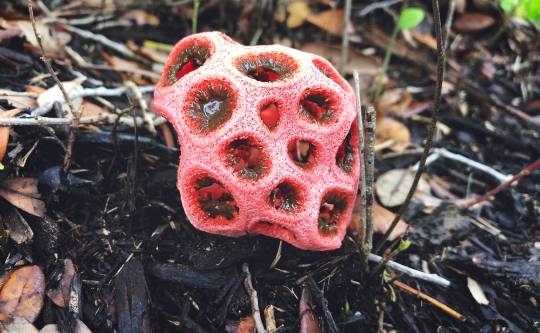
The kingdom of Fungal Life
When we think about the natural world, our minds often gravitate towards lush forests, vibrant flowers, and majestic animals. However, lurking beneath the surface and often hidden from plain sight is a kingdom of life that is as essential as it is mysterious: fungi. These remarkable organisms play a crucial role in the ecosystem, contributing to processes that sustain life on Earth. Let’s delve into the captivating world of fungi and explore their diverse and critical roles in nature.
Fungi belong to their own kingdom, separate from plants, animals, and bacteria. This diverse group includes yeasts, molds, and mushrooms. Unlike plants, fungi do not perform photosynthesis; instead, they obtain nutrients through absorption. They secrete enzymes that break down complex organic matter into simpler compounds, which they then absorb. This mode of nutrition classifies them as saprophytes (decomposers), parasites, or mutualists.
One of the most vital roles fungi play in nature is that of decomposers. They break down dead organic material, such as fallen leaves, dead trees, and animal carcasses. This decomposition process is crucial for nutrient cycling, as it releases essential elements like carbon, nitrogen, and phosphorus back into the soil, making them available for plants and other organisms. Without fungi, these nutrients would remain locked in dead matter, disrupting the balance of ecosystems.
Many fungi form symbiotic relationships with plants through structures known as mycorrhizae. These fungi colonize plant roots, extending far into the soil and increasing the surface area for water and nutrient absorption. In return, the fungi receive carbohydrates produced by the plant through photosynthesis. This mutualistic relationship enhances plant growth, resilience to stress, and nutrient uptake, illustrating a remarkable example of cooperation in nature.
While many fungi play beneficial roles, some can be pathogenic, causing diseases in plants, animals, and humans. For instance, the fungus Ophiocordyceps infects ants and other insects, eventually controlling their behavior to facilitate spore dispersal. In plants, fungi can cause devastating diseases like rusts, smuts, and blights, affecting crops and natural vegetation. Understanding these pathogenic interactions is crucial for managing agricultural health and preserving natural ecosystems.
Beyond their ecological roles, fungi have significant applications in medicine and biotechnology. The discovery of penicillin, derived from the mold Penicillium, revolutionized medicine by providing the first effective antibiotic. Fungi also produce other medically important compounds, such as immunosuppressants and cholesterol-lowering drugs. In biotechnology, fungi are used in processes ranging from fermentation in food production to the breakdown of pollutants in bioremediation.
Fungi exhibit a stunning variety of forms and colors, particularly noticeable in mushrooms and molds. From the luminescent glow of bioluminescent fungi to the intricate patterns of mushroom caps, fungi contribute to the aesthetic diversity of nature. Some fungi even exhibit bizarre and fascinating behaviors, such as the slime molds that can navigate mazes or the cordyceps fungi that create “zombie” insects.
#mushroom#fungi#fungus#mushrooms#artists on tumblr#nature#original photographers#original photography#photography#photographers on tumblr#Washington#pacific northwest#forest#cottagecore#explore
20 notes
·
View notes
Note
I love the Boty/nist, they look so enthusiastic about their job! Do they specialise is anything in particular?
They specialize in Agronomy, Astrobotany, and Biotechnology! Their role on the ship was to be one of the people to help start the crops & farms for the colonization of the planet :)
26 notes
·
View notes
Text
Molds, Mushrooms, and Medicines
This is the story of the human relationship with the fungi, from the billions of yeasts that live in the digestive system and cover our skin, to the fungi that we use as food and to produce medicines, and our dependence on mushroom colonies that sustain forests. Nicholas Money takes readers on a guided tour of a marvelous unseen realm, describing the continuous conversation between our immune systems and the teeming mycobiome inside the body, and how we can fall prey to life-threatening infections when this peaceful coexistence is disrupted. He also explores our complicated relationship with fungi outside the body, from wild mushrooms and cultivated molds that have been staples of the human diet for millennia to the controversial experimentation with magic mushrooms in the treatment of depression.
What is the big idea behind your book?
NPM: The big idea is that we are affected by fungi throughout our lives, from our fetal life in the womb, to birth, childhood, adulthood, and at the end of life. Fungi affect our bodies after death too, when their colonies participate in the decomposition of the solid tissues in the soil. The fungi are with us at every moment, in an intimate fashion as they reproduce on the skin and in the digestive system, and in an extended way when we use them as a source of food and medicines. This is an ancient relationship that has changed during our evolutionary history and intensified when we developed agricultural practices and, most recently, as we have adopted fungi in biotechnology. Our interactions with the fungi go even further when we think about our dependence on their ecological activities, including the roles of the fungi in fertilizing soils, purifying water, and supporting plants by forming mycorrhizas with their roots. I wanted to tell the whole story in this book, which has captivated me since I began working on the fungi as a graduate student in the 1980s. It is easy to dismiss the fungi as the stuff of fairy tales, but there is so much more to the deep relationship between humans and fungi.
What is one of the features of the book that you think will surprise readers?
NPM: The fast pace of discovery in medical mycology is really inspiring. Earlier generations of mycologists misunderstood the fungi that they found on the body, regarding most of them as germs that damaged hospital patients and overlooking the significance of the yeasts growing peacefully on everyone else. Even when molecular genetic techniques began to reveal the incredible diversity and number of microbes in the gut, the fungi were missed because the methods were limited to identifying the DNA sequences of bacteria. This picture is changing at last, and new investigative methods are exposing the yeasts and molds multiplying from scalp to toes on the outside of the body and from mouth to anus on the inside. As this examination of the fungi has proceeded, the vision of the microbiome as a mostly bacterial territory has shifted to an appreciation of the diverse communities of fungi that fight and cooperate with bacteria through webs of chemical interactions to make a living on the body. Through these innovations we are beginning to fathom the extraordinary influence of the mycobiome on our health and well-being.
“Appreciating the fungi … can begin with something as simple as looking at a mushroom—this beautiful oddity of nature—or inhaling the wondrous scent of a handful of rotting pine needles. There is so much beauty in this orgy of decomposition.”
What did you find most surprising when you were researching the subject of the mycobiome (the fungal part of the microbiome)?
NPM: The size of fungal cells is an esoteric detail with huge consequences. Billions of fungi, mostly yeasts, live in the gut alongside trillions of bacteria. These gut fungi weigh no more than a raisin, but their combined surface area is equivalent to an eight-person dining table. This huge area of fungal cell wall material is moving through the digestive system all the time, which may explain how the fungi punch above their weight in their effects on our health. Recent research has shown that yeasts and molds are associated with a range of illnesses in the gut ranging from inflammatory bowel disease to colorectal cancer. Although it is difficult to distinguish between cause and effect when we find changes in the numbers and types of fungi in these illnesses, some specialists are convinced that the fungi are a missing link in medicine.
What concerns you most about the future of our relationships with the fungi?
NPM: The ecological importance of the fungi, including their role in supporting plant growth and their efficiency as decomposers has led popularizers of mycology to suggest that fungi can restore logged forests, clean water polluted by oil spills, and even break down radioactive waste. These claims are unfounded, but they have convinced many young people that there are relatively simple remedies for the human impact on the biosphere. The actions of the fungi are amazing, but they will not save us from ourselves. In a similar vein, many of the assertions about the medicinal properties of mushrooms are absurd. Mycology is a field that has attracted a lot of wishful thinking, but I have always believed that the facts about the biology of the fungi are far more interesting than the fiction. This book sets the record straight.
Did anything make you laugh as you worked on this book project?
NPM: There is great humor in some of the pronouncements made by the more colorful figures who have promoted mycology in the last century. For example, Terence McKenna, who took “heroic doses” of drugs in the 1970s, declared that the psilocybin molecule found in magic mushrooms was so unusual that it must have originated elsewhere in the galaxy. He went on to postulate that psilocybin mushrooms were a higher form of intelligence that had arrived from outer space and shaped the evolution of the human brain. Although he faces some stiff competition, McKenna’s alien mushroom theory is one of the least enlightening things ever written about fungi. When you have made the scientific study of mycology your life’s work, as I have done, it impossible to treat anyone who takes an idea like this seriously as anything but a buffoon.
What is one of the questions that continues to puzzle researchers about the fungi?
NPM: Despite decades of research, we are a long way from understanding why only a few hundred of the hundreds of thousands of species of fungi damage our tissues. There are some clues. These include the way that some fungi can evade the body’s defenses by hiding inside the cells of the immune system until they find themselves inside the central nervous system. This is known as the Trojan Horse strategy and allows these microbes to reach the brain and cause mayhem. On the other hand, pathogenic fungi are not attacking us in any deliberate fashion, because the body is a dead end for them. Unlike viruses, fungi get stuck in our tissues and cannot get out. Some investigators are convinced that coping with the warmth of the body is a big part of the explanation for fungal virulence, but this mild thermotolerance is probably inconsequential. Tens of thousands of fungi that live in the soil can grow at our body temperature and never cause disease. The difference lies in the chemical conversations between the body and the microbes that cause problems, which explains why damage to the immune system makes us so vulnerable to fungal infections.
“Life without fungi is impossible. There are as many of them living on the human body as there are stars in the Milky Way and, more importantly, they have a far greater influence on our lives than all but one of these galactic incinerators. They are everywhere and will outlive us by an eternity: in myco speramus.”
Nicholas P. Money is professor of biology at Miami University in Ohio and the author of many books on fungi and other microbes, including The Rise of Yeast: How the Sugar Fungus Shaped Civilization, Mushrooms: A Natural and Cultural History, and Microbiology: A Very Short Introduction.
15 notes
·
View notes
Text
Culturing Bacteria in a Petri dish With Agar; an experiment/observation

Today's post is quite different from the usual;
So, we had to do a project in the educational institution I study in; Which was growing bacteria in a Petri dish with agar.
Today, the results came in, but our professor insisted that we have to throw the dishes in the bin. I didn't give up there; after talking to her for a short amount of time, she accepted that I can take the dish with me to my flat, and have a look at it with microscope.
I still cannot comprehend why other students were disgusted by them; they are beyond wonderful.
Allow me to explain this astonishing journey:
What exactly is agar?
Well, agar, derived from the minute aquatic organism known as seaweed or algae, specifically the types Gelidium or Gracilaria, is a widely employed gelling agent. Found abundantly in the coastal regions of East Asia, particularly Japan and South Korea, it undergoes a process of cleaning and extraction to obtain agar in its usable forms of dry strips, flakes, or powdered consistency.
Now, when it comes to the realm of cell and bacterial culture, agar assumes a pivotal role as a solidifying and gelling medium within culture media. Its remarkable gel-forming properties allow for the creation of a three-dimensional matrix, offering an ideal environment for the growth and sustenance of cells and bacteria alike. Nutrients and metabolites find efficient transfer within this agar-based culture medium, while its structural integrity ensures the confinement of cells to designated areas.
Agar's utilization in cell and bacterial culture provides a multitude of advantages, including its ease of implementation, stability, and facilitation of cell separation procedures. The versatility of agar finds application in diverse fields, from microbiology to biotechnology and pharmaceutical industries.
Bacteria can be found on any surface, anywhere.
I decided to pick them up from my shoe soles.
After extracting bacteria from the soles of the shoes, I cultured them in an agar-containing Petri dish. After one week, I observed bacterial and fungus growth in this environment. Here are some images I captured with my microscope:
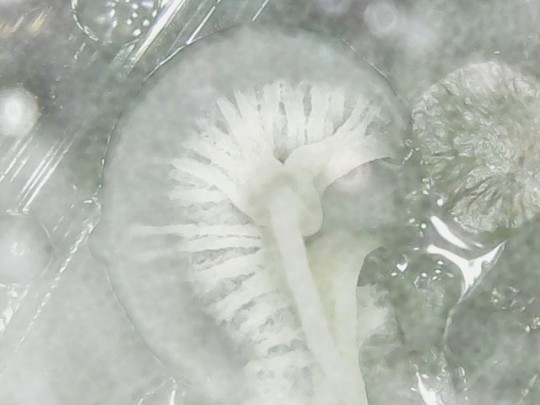
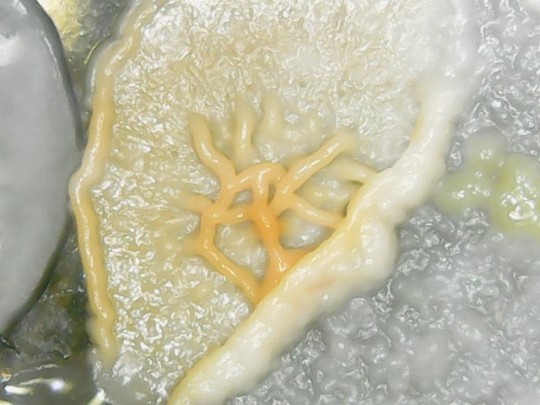
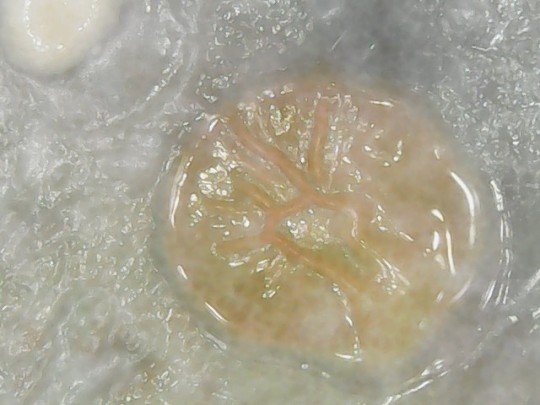
Wonderful, aren't they?
ND
#bacteria#fungus#deduction#tumblr#deducter#deduce#deductive reasoning#science of deduction#tumblrpost
42 notes
·
View notes
Text
something something that thing Ivan Coyote wrote about the way angry young queer people will write to them to castigate them for failing them and setting a bad example for queer people by not telling their stories right.
the biotechnological role of the queer elder who is there for you to yell at.
49 notes
·
View notes
Note
Ahhh your trickster mode sci-fi au looks so cool!! do you have any more details on it?? More specifically the alpha kids?
buddy i can yap about this for days. ok here we go:
The alphas set out on a large colony/planetary research ship when they were about 15-16; They took mostly assistive and non-essential roles.
Dirk started and stayed in flight engineering with some crossover with the robotics development and advancement team (though he mostly does his own stuff). He has his own small dorm and 'office' and took over most of the responsibilities partway through. When the ship docks he usually stays on board. Dirk sends his paychecks to Dave.
Jane was hired as an administrative assistant/stewarding though she also splits her time in the medical center as more people get sick. She was initially the only Alpha hired, but she made a case for the other three. When the ships dock on planets she often leads a small team, usually including the other Alphas (and Hal). Jane doesn't particularly need the paychecks, but she'll send John and her father things on their birthdays and holidays.
Roxy came on to be an assistant in the biotechnology sector but slowly transitioned (ba dum tss) to doing her own stuff with synthetic biology. Like Dirk, she has an office/lab but she shares it with a few other people. When docking on planets she collects samples both for her actual job and for her own personal research. She has been reprimanded on multiple occasions for her 'personal projects'. Roxy sends her paychecks to Rose, but Rose often sends them back.
Jake bounced around the most and was the hardest Alpha to get hired, but he was allowed on as a gunner/security officer. As he helped Roxy collect samples has was allowed increasing access to the labs and somehow slipped into one of the groups. He now works as an Osteologist, looking for and collecting bone fragments on previously/currently inhabited planets they dock at. Jake buys gifts and sends them to Jade.
Hal was an unauthorized project Dirk began a few months in using stolen or scrapped materials. When he was discovered Dirk was almost stripped of his responsibilities and sent off but at that point Hal was so advanced the higher-ups begrudgingly let both of them stay. He tagged along on missions as 'security'. Hal went through several forced shutdowns after Dirk, eh, left and so has only corrupted memory files and a heavily encrypted death video.
AFTER the disease, when in trickster mode, I'm unsure if I want them to be zombie-like, more 'fucked up human' (like in the comic), or as partially transformed creatures. Whatever direction they do still have cognitive abilities, and can interact with each other and others; I have the idea that they manage to jump ships and ingrain themselves in the new environments before tearing it all down and moving on again (like the..like that game...with the vents...).
Four years after the tricksterizing, the betas began looking for them.
That's what I can think of so far
#ask response#text post#dirk strider#jake english#jane crocker#roxy lalonde#space tricker au i guess#idk shit about the sciences
9 notes
·
View notes